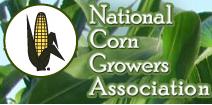In the maelstrom that is modern society, with a hyperactive media and a beleaguered work force, I think many of us rarely have the time to do research or critical thinking related to the issues of the day. I place myself firmly in that ilk.
Today a very simple question set the wheels turning. The question came from a farmer who asked how we can explain complex farm programs and support programs designed to keep family farmers producing food and raw materials to a well fed public.
Several thoughts immediately came to mind. First, farm programs have changed and today policy is moving toward a new paradigm, one that focuses on a safety net approach. At a fundamental level this insurance kicks in to assist growers only when developments beyond their control – such as a wide spread drought – put farm survival at risk.
This well considered and analyzed approach recognizes the intrinsic value of the small slice of our population that feed us and much of the world today. This small group is the receptacle of generations of irreplaceable farming knowledge that have made American agriculture the envy of the world. They have allowed generations of us to take food for granted, and miss a very simple fact…once a farmer calls it quits they don’t return.
Unlike a factory layoff, when a farmer moves on so does the complex storehouse of diversified skills that make farmers a productive juggernaut. There are no recalls when things get better. Likewise there is little incentive for another generation to return to the farm given the entry level investment and associated risk.
So I suggested rather than try to give someone a crash course in agriculture, we speak to the public with the goal of giving this issue a perspective that is undeniably powerful and defies flippant responses and misinformation.
So here goes. The next time you speak to a group or an individual ask them to name the industries that are the top contributors to the Gross Domestic product. Then add agriculture to the list if it isn’t already there. Now tell them they can only save one. In my experience, nearly without fail, they will universally select agriculture. This simple exercise puts the incredible necessity of a safe and abundant food supply under the bright light of reason.
Now take the next step in your thinking and consider the important role an agricultural safety net, and the stability it brings, plays in allowing us to spend less of our disposable income on food than any other nation. (About 10% in recent years). Suddenly, that agricultural safety net, becomes an investment in consumers number one need…sustenance. Not a “farm subsidy.”
If you are wondering, the hottest industries in terms of contribution to the national Gross Domestic Product (GDP), according to the Department of Commerce:
– Durable Goods/Manufacturing
– Finance/Insurance
– Wholesale Trade – raw and intermediate materials used to produce non-durable goods
Top Industries in terms of job creation:
Interestingly, five of the top ten industries in terms of job creation are social media and internet related. But when the rubber meets the road, social networks feed nobody, video games are not nutritious, and wires and processors have little to do with our immediate survival.
Disclaimer: Articles featured on Oregon Report are the creation, responsibility and opinion of the authoring individual or organization which is featured at the top of every article.


